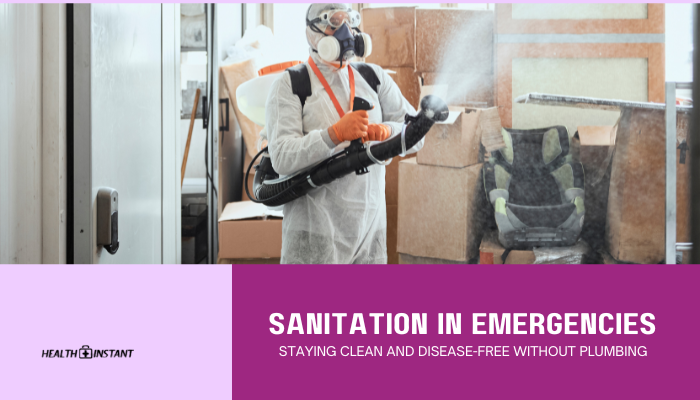Introduction
The 1918 influenza pandemic, commonly called the Spanish Flu, was one of the deadliest global outbreaks in recorded history—claiming millions of lives worldwide. Although health infrastructure and scientific knowledge have improved immensely since then, the events of 1918 continue to serve as a cautionary tale.
This guide explores how the Spanish Flu spread, the public health measures attempted, and the enduring lessons that shape our preparedness for modern infectious disease threats.
Overview of the 1918 Spanish Flu Pandemic
- Timeline
- The virus emerged in early 1918, with waves continuing through 1919.
- The virus emerged in early 1918, with waves continuing through 1919.
- Mortality
- Estimates vary widely, but 50 million or more deaths are often cited.
- Estimates vary widely, but 50 million or more deaths are often cited.
- Virus Characteristics
- Caused by an H1N1 influenza A strain, particularly lethal compared to typical seasonal flu.
- Caused by an H1N1 influenza A strain, particularly lethal compared to typical seasonal flu.
The pandemic’s second wave (mid-1918) proved the deadliest, showing that timing and mutations of the virus significantly affected outcomes.
Why It Spread So Rapidly
- Global Mobility
- Ongoing WWI troop movements accelerated transmission across continents.
- Ongoing WWI troop movements accelerated transmission across continents.
- Overcrowding
- Military barracks, ships, and hospitals served as hotbeds for viral spread.
- Military barracks, ships, and hospitals served as hotbeds for viral spread.
- Limited Medical Knowledge
- Antibiotics for secondary infections didn’t exist; supportive care was minimal.
Additionally, minimal communication technology hampered swift public health alerts and consistent instructions.
Public Health Measures in 1918
- Quarantines and Masks
- Many cities tried mask mandates and partial lockdowns, but enforcement varied.
- Many cities tried mask mandates and partial lockdowns, but enforcement varied.
- Event Cancellations
- Public gatherings were sometimes banned, though not always consistently.
- Public gatherings were sometimes banned, though not always consistently.
- Health Education
- Limited campaigns advised basic hygiene, though scientific explanations for viruses and prevention remained less advanced.
Non-pharmaceutical interventions (NPIs) offered inconsistent effectiveness partly due to incomplete data and uncoordinated responses.
Impact on Society and Healthcare
- High Mortality Among Young Adults
- The unusual pattern of many healthy 20–40-year-olds dying had profound social and economic repercussions.
- The unusual pattern of many healthy 20–40-year-olds dying had profound social and economic repercussions.
- Strain on Hospitals
- Facilities quickly ran out of beds, staff, and supplies.
- Facilities quickly ran out of beds, staff, and supplies.
- Long-Term Public Awareness
- Governments began investing more in public health systems and research to prevent future pandemics.
Communities that implemented early, stricter measures often fared better, highlighting the role of timely intervention.
Key Lessons for Modern Preparedness
- Early Response
- Quick action (mask mandates, limits on gatherings) can slow infection rates dramatically.
- Quick action (mask mandates, limits on gatherings) can slow infection rates dramatically.
- Transparent Communication
- Coordinated, honest messaging helps maintain public trust and compliance.
- Coordinated, honest messaging helps maintain public trust and compliance.
- Infrastructure and Staff
- Investing in robust healthcare systems ensures surge capacity during crises.
- Investing in robust healthcare systems ensures surge capacity during crises.
- Global Collaboration
- Diseases cross borders; only collective vigilance and sharing data can mitigate worldwide impacts.
- Diseases cross borders; only collective vigilance and sharing data can mitigate worldwide impacts.
- Adaptation of Non-Pharmaceutical Interventions (NPIs)
- Lockdowns, quarantines, and distancing measures still remain potent when vaccines are unavailable.
Comparisons to Recent Outbreaks
- COVID-19
- Shared reliance on NPIs until vaccines rolled out, highlighting the synergy of modern technology with classic methods (masks, distancing).
- Shared reliance on NPIs until vaccines rolled out, highlighting the synergy of modern technology with classic methods (masks, distancing).
- Seasonal Flu vs. Pandemic Flu
- Seasonal strains typically have partial community immunity; novel pandemic strains do not, causing higher mortality.
- Seasonal strains typically have partial community immunity; novel pandemic strains do not, causing higher mortality.
Widespread global travel and urban density remain persistent risk factors, echoing aspects of 1918’s widespread troops and shipping lines.
Looking Ahead: Strengthening Global Health Resilience
- Enhanced Surveillance
- Modern genetic sequencing can detect new influenza or coronavirus strains quickly.
- Modern genetic sequencing can detect new influenza or coronavirus strains quickly.
- Rapid Vaccine Development
- mRNA and other advanced platforms expedite vaccine timelines.
- mRNA and other advanced platforms expedite vaccine timelines.
- Equitable Distribution
- 1918 showed how neglected regions can flare again. Balanced resource allocation fosters global control.
- 1918 showed how neglected regions can flare again. Balanced resource allocation fosters global control.
Coordination among governments, public health bodies, and private entities is key to responding faster than viruses mutate.
Conclusion
The 1918 Spanish Flu was a defining global health catastrophe, instructing future generations on the value of swift, coordinated measures to fight pandemics. Though our scientific and medical capabilities far surpass those of a century ago, the fundamental lessons remain: early interventions, robust healthcare, consistent public messaging, and global cooperation.
By applying these insights, societies can better cope with emerging infectious threats, aiming to avoid large-scale tragedies reminiscent of 1918.
References
- Centers for Disease Control and Prevention (CDC). (2021). 1918 Pandemic Influenza: Historic perspectives and modern lessons.
- World Health Organization (WHO). (2019). Pandemic influenza preparedness.
- Taubenberger JK, Morens DM. (2006). 1918 Influenza: the mother of all pandemics.
- American Public Health Association (APHA). (2020). Managing pandemic threats through historic lessons.
Disclaimer: This article provides general information. For specific medical, historical, or policy inquiries, consult relevant experts or official health agencies.





